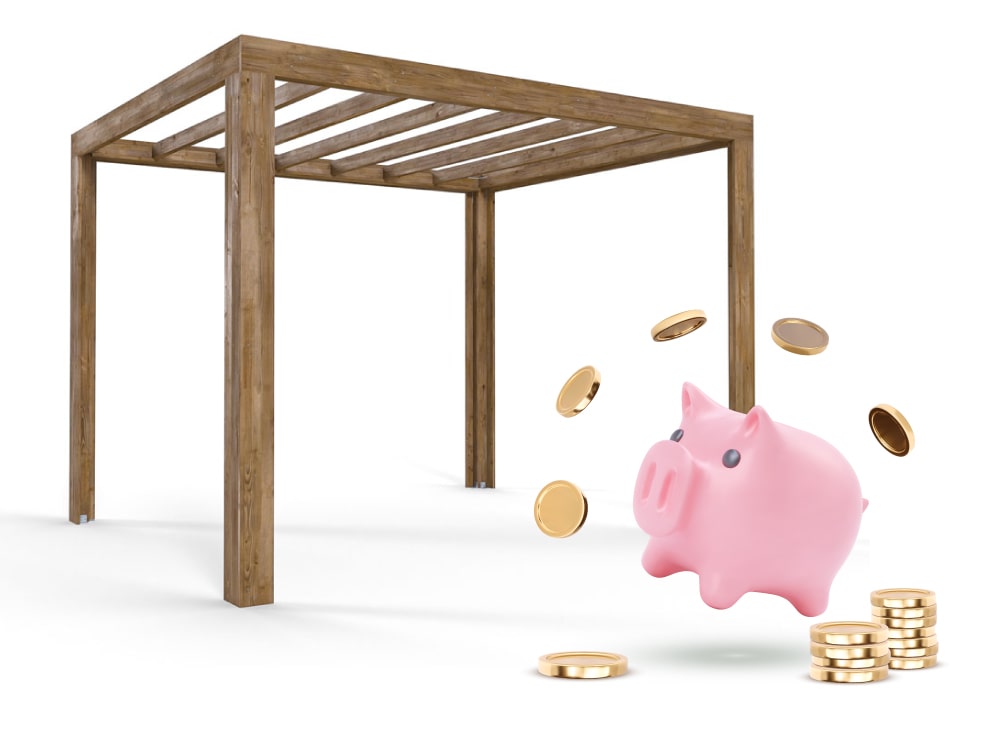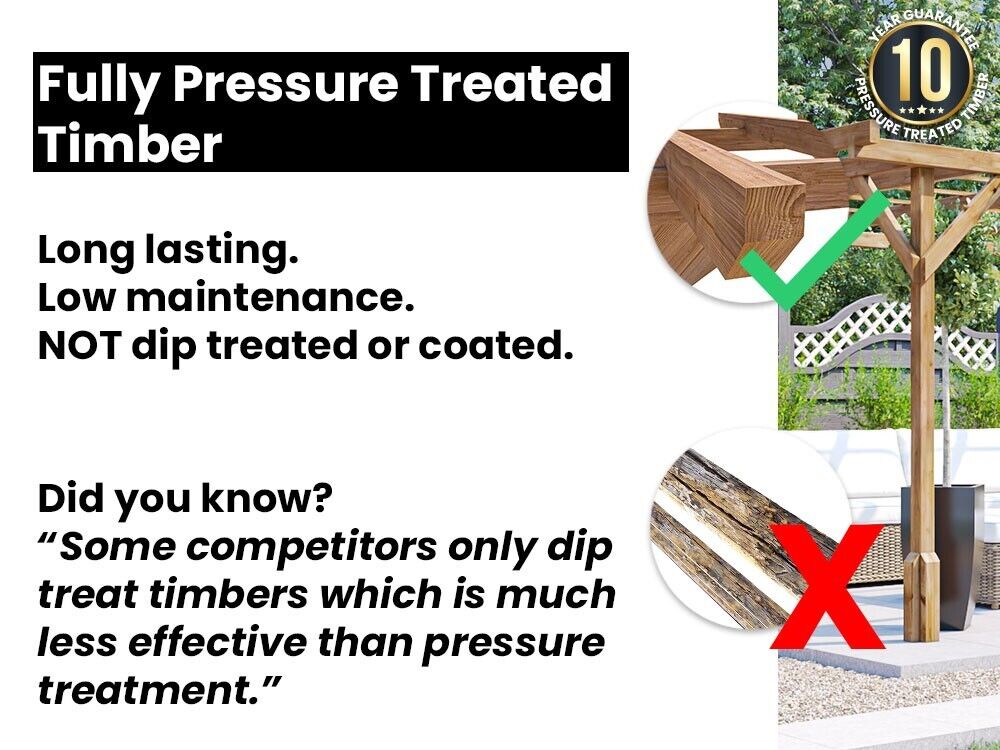It’s worth mentioning that different pergola styles can be purchased but each of them have pros and cons
| Materials |
Pros |
Cons |
| Wood |
Budget-friendly.
Service life of 15 years+.
Natural and warm appearance.
Timeless style. |
Can face rot and decay. Ensure you purchase a pergola with a pressure treatment guarantee. Also ensure the pergola is pressure treated and NOT dip treated. |
| Wrought iron |
Strong and impact-resistant.
Service life of 15 years+. Charming and elegant appearance. |
Must be treated against rust every two years. Very heavy structure. |
| Aluminium |
Good thermal resistance. Unlimited service life. No specific maintenance is required. On-trend material. |
More expensive than other materials. Less likely to fit in with its outdoor surroundings. Not customisable |
Additionally, make sure the pergola is built with sturdy, weather-resistant hardware like stainless steel screws.
Consider the Assembly Process
If you are relatively new to the DIY world, assembly of your outdoor structure may seem a bit daunting. Some wooden pergolas come with pre-cut pieces that make assembly a breeze, while others require more advanced carpentry skills. Beams with pre-cut notches will ensure precision and a snug fit, whilst making the assembly process a lot quicker and easier for you. Make sure you know what you are getting into before you buy.
All our garden buildings have been designed on the basis that any competent DIY customer should have no problem installing a product themselves in a short amount of time. You do not have to be an expert at DIY to build a Dunster House garden building, as we do provide you with comprehensive pictorial instructions. We totally understand that DIY is not for everyone therefore, you may want to consider getting in touch with a local carpenter or handyman to install it for you. But before you do, check out our construction video and decide for yourself!
Read reviews
Finally, read reviews from other customers who have purchased the pergola you’re considering. This will give you an insight into any potential issues or concerns you should be aware of before making your purchase. Buy from a well-established company that you can trust.
By following these steps, you’ll be well on your way to choosing the perfect wooden pergola for your outdoor space. Remember to take your time and do your research to ensure you make a purchase you’ll be happy with for years to come.
Still, have some questions?
Our friendly sales team would be happy to talk to you about any queries you may have about our products or services. Contact us
Alternatively, here are some FAQs that you may find helpful.
What is a wooden pergola?
A wooden pergola is a garden or outdoor structure consisting of vertical posts or pillars that support horizontal crossbeams and an open lattice roof. It is designed to provide shade, support climbing plants, and create an inviting outdoor space.
What are the advantages of a wooden pergola?
- Adds aesthetic appeal to outdoor spaces.
- Provides shade and protection from the sun.
- Supports climbing plants for a natural canopy.
- Offers a defined outdoor area for relaxation and entertainment.
Frequently asked Questions
What types of wood are commonly used for pergolas?
Common wood choices include cedar, redwood, pine, and pressure-treated lumber. Cedar and redwood are popular due to their natural resistance to decay and insects but these options can be pricey. Look out for slow-grown spruce alternatives which are pressure-treated and can provide a great alternative.
Can I install a wooden pergola myself?
Yes, it is possible to install a wooden pergola as a DIY project if you have the necessary skills and tools. However, it is recommended to consult building codes and regulations in your area and consider hiring a professional for more complex designs.
What is the average cost of a wooden pergola?
The cost of a wooden pergola varies widely depending on its size, design, type of wood, and location. On average, it can range from a few hundred pounds for a small DIY kit to several thousand pounds.
Can I customise the design of my wooden pergola?
Yes, you can customise the design of your wooden pergola to match your preferences and the style of your outdoor space. You can choose the size, shape, and features such as decorative cuts, lattice patterns, and more. We do not however endorse any structural modifications to a Dunster House designed product.
How long can I expect a wooden pergola to last?
The lifespan of a wooden pergola depends on the type of wood, the quality of construction, and the maintenance. Generally, a well-maintained wooden pergola can last 10-25 years or even longer.







